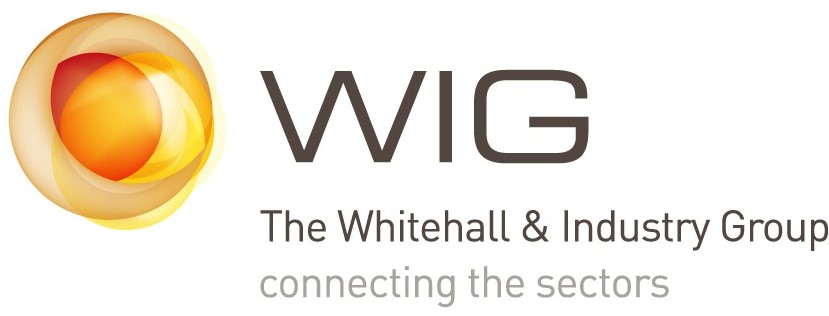In recent years, organisations have faced unprecedented levels of change due to geopolitical events, technological advances, and new ways of working. This rapidly shifting environment requires leaders to adapt and learn to meet new challenges.
At a recent WIG webinar, NatWest’s Group Chief Operating Officer Jen Tippin shared insights on leading organisations during times of change.
Key Takeaways
- The rapidly changing environment has changed the needs and expectations of internal and external stakeholders which requires an organisational response
- Leaders must adopt adaptive and collaborative behaviours to lead well through periods of rapid change and uncertainty
- Cocreating new policies and plans with key stakeholders helps increase buy in and leads to a more informed plan
- Inclusive leadership helps ensure a diversity of perspectives are heard, leading to more well-informed decisions
- A test and learn approach helps develop procedures that are responsive to change
The impact on stakeholder expectations
Major levels of change have transformed expectations from internal and external stakeholders. To meet these, organisations must determine how to develop the best employee proposition that also works for the business to meet customer demands.
Customer behaviour and needs
External environmental changes have accelerated the emerging trends for customer needs and behaviour. These shifts affect the type of service provided, the distribution of resource, and the makeup and structure of the team.
For example, customers now primarily use their mobile phone to access banking services. This new preference requires a workforce with a larger number of engineers than in previous years.
Employee experience
The requirements of the employee experience have also changed. Since the pandemic, the move to a hybrid environment has required organisations to introduce tools to enable collaborating while working in different locations and to shift the methods they use to attract and onboard talent and manage teams.
Embracing adaptable leadership behaviours
To effectively face these changes, leaders must adapt leadership styles and behaviours that differ from previous ways of working.
Focus on team capabilities.
The external context and quickly changing world makes it vital for leaders to think beyond the individual when considering their leadership style. Instead of focusing on what leaders as individuals can achieve, improve on, and learn, leaders must instead look at the team as a whole and consider the team’s skillset and data available to help make decisions.
Carve out time to learn
Embracing change as an opportunity to learn helps leaders thrive in any situation. Learning does take time, and creating space in their schedules to do this is often a challenge for busy leaders. However, it is essential to carve time out to reflect, and some methods to enable this include:
Surrounding yourself with a strong team
Having a team capable of stepping up enables leaders to delegate tasks, freeing up time for themselves to learn. This also allows team members to showcase their capabilities and grow their skillset.
Ensuring time is spent on priorities
Leaders should take a dispassionate look at their diary to constantly challenge whether they are spending time on the right thing. Prioritise driving the right outcomes instead of spending too much time on processes and tasks.
Having the confidence to say no
While leaders can often be eager to add or expand on something, it takes confidence to suggest using a simpler approach or ending a process. The fast-pace and expectations from colleagues and customers makes saying no essential.
Practice inclusive leadership
Inclusive leadership allows leaders to unlock a better answer from their teams. Including colleagues with different skills and backgrounds allows more informed and well-rounded solutions to surface because of the different points of views and attitudes.
Communicate well
Leadership involves communicating with different audiences. It is important to know the target audience and tailor communication to their preferred approach while remaining open, authentic, transparent, and true to your values. No one has the answer to every problem, and being open to that and able to ask for help and input unlocks more solutions.
Bringing the team through organisational transformation
Leaders must work with their team to help them navigate necessary changes, often through a more collaborative approach.
Less top-down driven change, much more cocreation with people
Previously, often leaders ideated a set of solutions that they would then ascade these ideas through the business. Because change is now constant, the top-down method no longer works. Now, leaders must be agile and cocreate new practices and policies with their colleagues.
Leaders must think about how they help their people through the change. Cocreating initiatives makes getting buy in from the wider organisation easier.
In action: cocreation when changing performance management
When NatWest updated their performance management procedures, they used a collaborative rather than top-down approach to determine the direction of the project. Their goal was to improve goal setting, rewards, and the sense of belonging on the team. To determine the way forward, they implemented a series of experiments involving over 6000 people from across the company and 100,000 data points. This led to a completely bespoke design with buy in built in.
Multi-function team structure
Combining multiple functions on a challenge-focused team helps ensure different perspectives are considered throughout building the solution. One way to do this is creating an agile scrum consisting of people from different teams. This brings about a fundamentally different approach to creating an experience that challenges thinking and helps build buy in throughout the process.
Test and learn approach with a continuous learning mindset
The rapidly changing environment increases the need for a test and learn, adaptive approach. When trialling a new idea, undertaking a two-week sprint by designing, setting up experiments, gathering the data and evaluating results can create new processes quickly. Embracing a continuous improvement mindset rather than a fixed mindset helps leaders learn the most from this process.
Continue your journey with WIG:
The Whitehall & Industry Group’s leadership programmes and mentoring services help leaders to develop the collaborative and inclusive approach needed for rapidly changing times.

